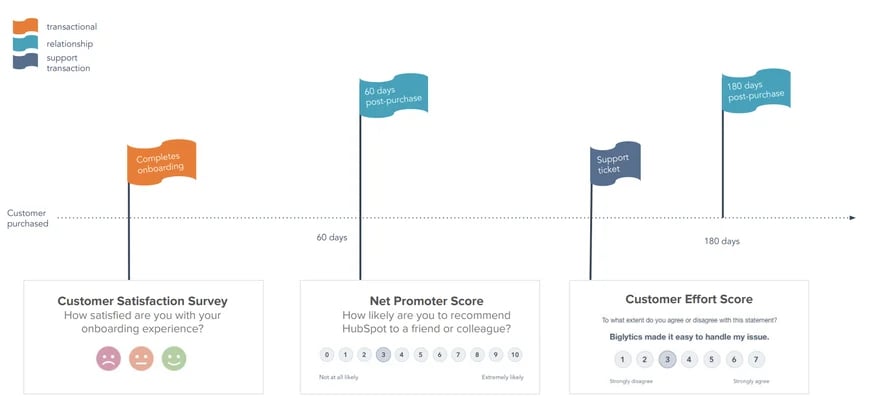Customer service strategy that truly puts the customer first
Once upon a time in the distant past, I was given the booklet Kloteklanten which explained that customers are basically a necessary evil that you just have to deal with. And the better you are at it, the more successful you become. It's like work! And there the author has a good point. Especially in B2B where there is still a lot to gain in the customer service area. Work to be done!
Because people in B2B are still very much preoccupied with the product/service (product centric) and selling it, there has traditionally been too little attention paid to customer service. Especially in the more traditional B2B companies, there is a lot of attention in/at the beginning of the customer experience and it quickly decreases as the services or products are delivered.
However, that is when it really starts. Especially if you're really going to do something about it from within your own organization. And I'm not talking about some random after-sales deals that arise incidentally. No, customer service should be an integral part of your commercial process. Why? Because thecustomer journey does not end with the purchase of a product or service but starts with using the product or service.
From a seller's market to a buyer's market
In B2B, we often deal with niche markets and there, before the Internet brought globalization and computerization, the supplier was often in control. They determined, so to speak, what a customer could and could not expect. And once in, switching costs were so high, due to information scarcity, that the supplier may have felt untouchable. They came to him for maintenance, repairs and repeat purchases anyway. It was a vendor market but "times they are a changin'" to quote Dylan.
The B2B customer wants the same thing they are used to privately
Many people are very happy with the level of service when making choices for products or services in their private lives. Think of Bol.com, Netflix, Coolblue and many, many others. Click, Click, Click, Done. These organizations are fully equipped to help you as a customer as frictionless as possible and, of course, entice you into repeat purchases and upgrades. This ranges from recommendations and suggestions, to newsletters, discounts and updates on when the courier will arrive at your door with your package. No worries. And that doesn't hurt them. In B2B, this process is often still suboptimal and there is a lot to be gained by deploying customer service tooling.
Servitization in the manufacturing industry
Servitization has been an agenda item in many a management team in the manufacturing industry for some time now. Servitization is the process by which service is taking on an increasingly important role in the business model of manufacturing companies. Like marketing, customer service is changing from a cost item into an opportunity to better serve the customer, thus generating additional revenue.
In addition to their core products, manufacturing companies can proactively offer repair service services, spare parts, training and online instructions. But it also includes adjacent services such as advice, consulting, and logistics services. Within the manufacturing industry, servitization is more relevant than ever.
One reason is that the added value of manufacturing activities is declining. Due to a decreasing product lifecycle, you have to be able to operate flexibly and quickly and earn back your investments in a relatively short time with more commercial force (also in marketing and sales). Price is often the only distinguishing factor, but many original equipment manufacturers (OEs) and suppliers prefer not to participate in this race to the bottom. Make sure that your customer services around a product or service are distinctive and add value. You strengthen your proposition, generate an additional source of income and have happier and more loyal customers.
Customer service in the SaaS market
Many SaaS companies experience great pressure in the commercial process, especially around marketing and sales. Not surprising of course, because many SaaS players need to gain traction quickly in an often still young and relatively immature market. A lot of energy and attention is therefore devoted to bringing in new customers. As a result, there is often insufficient attention to the existing customer, while the latter should be the mainstay of the SaaS business. In short, customer retention and reducing churn are often essential after a dynamic start.
With good customer service processes and systems, every SaaS company can, in principle, manage this very well, for example with the Service Hub. It especially deserves timely management attention because often what comes in through the front door runs out through the back door again.

Want to get the most out of HubSpot? Subscribe to our newsletter, follow us on LinkedIn, or attend our HubSpot User Days!
Explore HubSpot User DaysShare this
You May Also Like
These Related Stories

What NPS and Customer Effort Score do for customer retention in B2B

Customer Success as the basis for a long-term relationship with your customer

